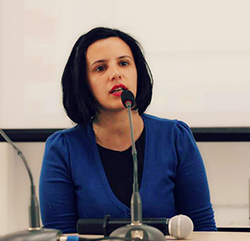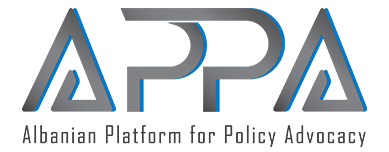
Blerina Llalla
1-If you say Gjirokaster, you have said it all
In the midst of numerous activities, publications and media appearances of the Ministry of Culture this month, an event stands out: ‘’Gjirokastra Folk Festival’’. During May the 9th edition of the festival took place. An event much awaited for Albanian artists, who consider it a good opportunity to promote and identify our cultural values. But what is this festival about and how was it conducted throughout the years?
National Folk Festival
The National Folk Festival was first held in 1968, at the castle of Gjirokastra. The second edition of the festival was organized five years after, respectively in 1973, to continue afterwards in 1978, 1983, 1988 again at Gjirokaster castle. In the 1973 festival during the final phase 1370 artists participated. In the 1978 edition, during the selection phase 53 000 participants were activated, while only 1560 of them interpreted during the festival days. In 1995 the Festival was held at Berat castle. In September 2000 it returns to the city of Gjirokaster. The festival was conceived in the form of a folk race where until 1988 prizes were delivered to the best groups, while the latest editions prizes were delivered to interpreters of the folklore. 2015 features the tenth edition of the festival.
For the Ministry of Culture and the public, the national folk festival in Gjirokaster is organized every five years. It is the biggest event of non-material heritage. It is the only cultural event where in a way or another all Albanians are represented, wherever they are. It is organized by the Ministry of Culture and the National Center for Folklore Activities.
Preparations for this edition started in 2014 with the dates postponed several times due to preparations from respective institutions and participants, with the final dates set for 10-16 May 2015. According to confirmations and public information in the official website of the Ministry of Culture the festival was supported by other ministries such as: Tourism, Agriculture, Education, Defense, Youth and Social Welfare, even the Ministry of Interior.
The main media partner was the Public Television and Albanian and foreign journalists who covered the event broadly.
The festival lasted 7 days according to the program published and available at the Ministry of Culture website. According to publications regarding the closing event we learn that 12 regions of Albania were represented with more than 1700 competitors of all genders and regions as well as from Kosovo, Macedonia and Montenegro. More than 100 costumes were rebuilt according to traditional and authentic craft techniques from the Ministry of Culture and were introduced in the folk scene. More than 15 special guests revived the festival nights and the city of Gjirokaster.
The festival was also greeted by groups invited from Italy’s Arberesh, Albanians in the US, Switzerland ande Turkey with approximately 100 artists, who brought the voice of the Albanian diaspora.
The final night in addition to standard prizes for participants there were also other prizes seen as career and encouragement prizes.
After the festival it was communicated that the Ministry of Culture and the National Center for Folk Activities in cooperation with the Center for Albanology Studies, will organize a post-festival roundtable with a research character to identify the most notable elements of the festival and create a favorable terrain for Albanian folklore.
According to organizers, the novelty of this edition remains the multicultural character of the program that aimed to display specific values and to revive new artistic activities.
But what is the final product of this folk marathon? The public and participants enjoyed their time and spent what they could and others received prizes as a stimulus and appreciation for their participation. Judging from different comments of citizens regarding this event we will see that they are dissatisfied with the fact that groups from diaspora were only guests in this festival. Was it possible to find ways to include them as participants with full rights, as an expression of gratitude and incentive to preserve and reflect our national values where they live, as groups with a special importance?
In other comments we can see dissatisfaction with the technical and audio aspects of the live transmission, quality of volumes, tones and voices.
Looking at the managerial aspect of the festival, the costs and expenditures from the budget of the ministry are not reflected anywhere. This would serve to compare and understand more the costs and quality offered and how much they justify each other in order to identify opportunities for improvements. From the information published later by different media outlets we learn that 70 million leke (a considerable amount) were in disposal of the festival but we still do not know how they were spent specifically. If we take a look at the format of the festival it is safe to say that it remains faithful to the frames since inception. This means it is difficult to find new and contemporary concepts in organization and the program as well as the benefits offered by this cultural event. It seems they only mimic and apply existing models structured for different times and needs. Naturally the materials and technology have advanced.
Therefore we think the moto and slogan of this event is correct: If you say Gjirojkaster, you have said it all.
70 million leke for:
– A celebration like all others, without a concrete benefit, a thoughtless investment, no innovation and concrete benefits for participants, mainly in the interest of organizers.
– No recorded CD with the pieces played by folk artists, who are rare to find in the cultural scene in Albania.
– No representation of record companies from other countries interested in conservation, reproduction and trade of this treasure of our culture in the domestic and foreign market.
– No new contracts to serve the development and promotion of these values, especially artists working to preserve and develop the heritage of these values without the proper evaluation from public or private subjescts.
– No symposium on UNESCO convention, as participating country especially for Gjirokastra as an added value, part of the world-renowned UNECO heritage.
– No discussion with the National/International Tourism Agency
– No agreement at the international level for winners that could represent our country in events or competitions of this nature outside the country.
A considerable amount of money spent for several days of celebrations: thank you Gjirokatra for bringing us together.
If we would analyse another aspect of the organization of the festival, the Ministry of Culture seemed to take care more of the media image of the event rather than the substance that has to do with the values as well as professional and artistic aspect and the development of conservation tradition through generations.
References:
1-http://www.shekulli.com.al/p.php?id=55328
2-http://www.kultura.gov.al/al/neësroom/lajme/argjirofest-on-ne-datat-10-16-maj-2015&page=2
4- http://www.panorama.com.al/festivali-i-gjirokastres-spektakel-me-olen-cezarin-e-rona-nishliun/
5- http://koha.net/?id=4&l=52005
6- http://gazeta-shqip.com/lajme/2015/05/11/gjirokastra-ne-shpat-mali-tundet-nga-festivali/




